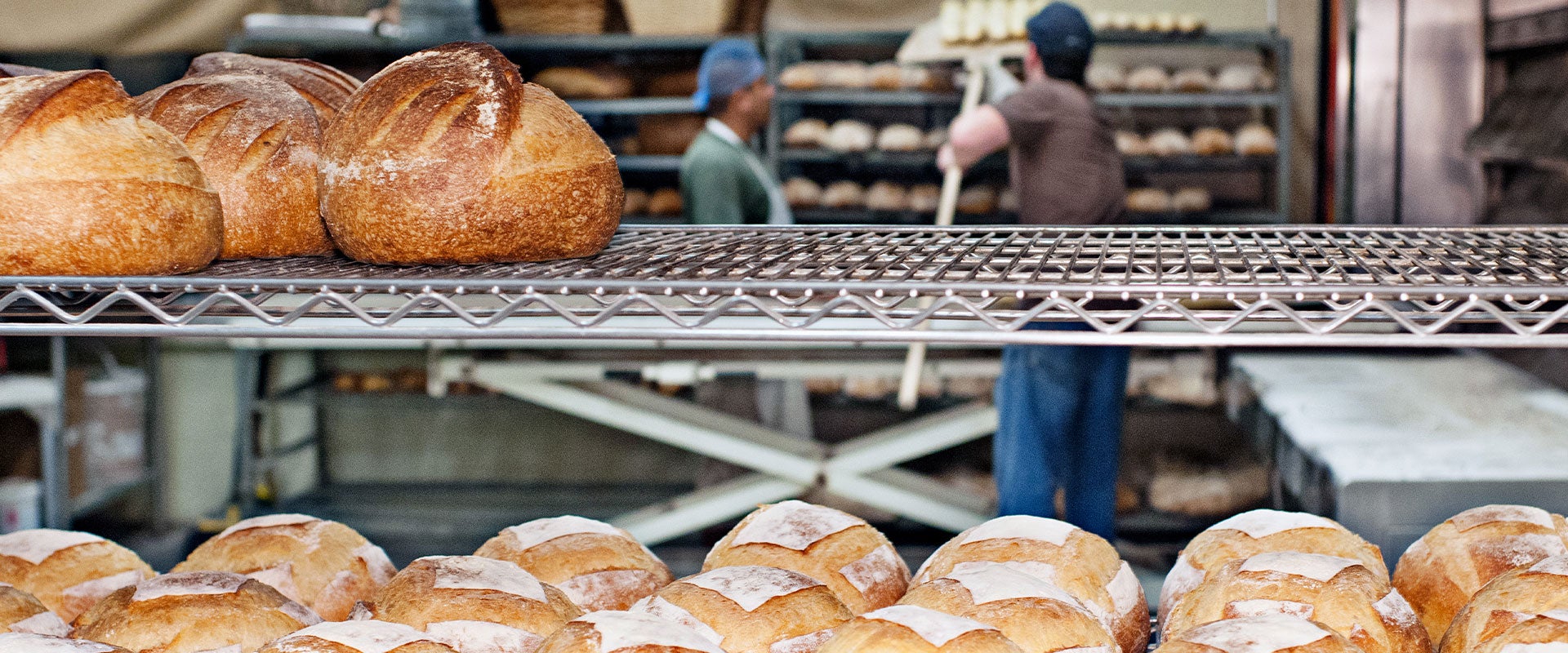Labor challenges, while not unique to bakery, were also prominent. From 2018 to 2021, the total number of bakery production workers declined from about 85,000 to 75,000. A tight labor market during the pandemic left many commercial bakeries short staffed. Baking requires skilled labor, and many industries were fighting for scarce high-quality talent from 2020 to 2022. Manufacturers then struggled to protect their margins while paying high salaries for the best personnel.
Aging infrastructure and workforce
While pandemic-era challenges are lessening, the bakery industry continues to experience headwinds of a different type, namely its aging infrastructure and workforce. The U.S. has an estimated 4,000-5,000 commercial bakeries; however, many assets have been in operation for several decades. Annual spend on repairs and maintenance increased from roughly $290 million in 2018 to $415 million in 2021, highlighting the scale of investment needed to keep facilities operational and moderately competitive.
“The majority of this industry — small to mid-sized and some of the big guys with multiple plants — they have exhausted equipment, been in the system for 30-40 years. But it’s not efficient, not easy to work with. And the majority of them are not spending the money to do so. The investment within the industry is lacking.”
— Bread bakery executive
Demographic shifts are taking a toll as well. The industry’s labor force is also aging, and many of the most experienced bakers are reaching the end of their careers. The pipeline of talent behind them appears light, with workers less committed to long-term careers in bakery.
“Bakers are not being born. We’re trying to create the environment where they want to come to work and [are] excited. Training is very important … we want to transfer that legacy knowledge.”
— Bread bakery executive
“Bakery talent is walking out the door. Bakery is an art and science. Bakery can change by the day, can change by the raw material, can change by the operator. It’s a highly technical category which is fun, but you need that art mixed in.”
— Sweet goods bakery executive
The lack of highly qualified bakers has required manufacturers to focus on perfecting the production of complex bakery goods. Introducing automation into facilities to ensure the reliability of future supply has become critical.
“Bakeries are a complex manufacturing environment. We’re not making cereal in a box. It’s a piece of art coming down the line. For some products, it’s going to cost $10, and it has to be perfect for our consumers.”
— Sweet goods bakery executive
“Automation is going to be key. It will help make jobs easier and more efficient, but it also allows us to be more consistent. That helps with our mixes, doughs and more. Automation is going to be key in our ability to continue delivering what we’re known for. We saw people retiring. We saw the knowledge go out the door, and we can’t let that happen.”
— Bread bakery executive
Opportunities going forward
During the pandemic, focus shifted from commercializing innovation to stabilizing supply chains, in part reflecting the priorities of customers. But new product launches have returned over the past year as retailers and foodservice operators brought new options to consumers. Now bakery suppliers are focused on innovation instead of navigating supply chain challenges.
“Over the past few years, there’s been little innovation. Everyone was trying to make what they could to deliver to their customers. Now that we’re past most of that, the innovation pipeline is coming in strong. There’s also lots of promoting to get the category back to a growth trajectory.”
— Sweet goods bakery executive
“In particular in foodservice, customers are looking at innovation again. There are a significant number of briefs coming our way. For the last few years, foodservice had to batten down the hatches and make sure they could get products. They had to pick the right partners. Now they’re back to talking about the future.”
— Sweet goods bakery executive
“Innovation provides an opportunity to build off historic strength, but with something different and unique. Innovation can take a lot of different forms. It could be something that’s innovative, from flavor profile or format. It could be taking items that are hard to manufacture and making it easier, without sacrificing quality.”
— Sweet goods bakery executive
The premiumization trend is clear in bakery as consumers prioritize affordable luxuries and indulgences. Consumers are willing to pay for something that is both delicious and unique.
“Premium is growing faster and pulling the category up. Even as consumers have less money to spend overall, they’re not willing to give up their indulgence. They’re willing to buy a smaller piece, but they still want really good chocolate cake.”
— Sweet goods bakery executive
As part of premiumization, better-for-you (BFY) is top of mind within the bakery segment, as seen in many other categories as well (see Figure 4). However, in an indulgent category like bakery, there must be a balance between healthfulness and the indulgent experience. Consumers will prioritize having the better cake over the cake that is better for you.
“What was growing pre-COVID was indulgent experiences, and that’s going to still be a driving force. What bakers are exploring is: How do I make bread better for you? Is it protein, probiotics, other things? They’re trying to blend together the perception of BFY and indulgent.”
— Bakery ingredients executive
“Bakery is still indulgent, but now consumers are looking at how long the ingredient list is. We won’t let taste or quality be sacrificed by it, but we won’t have preservatives in any of our products.”
— Diversified bakery executive














